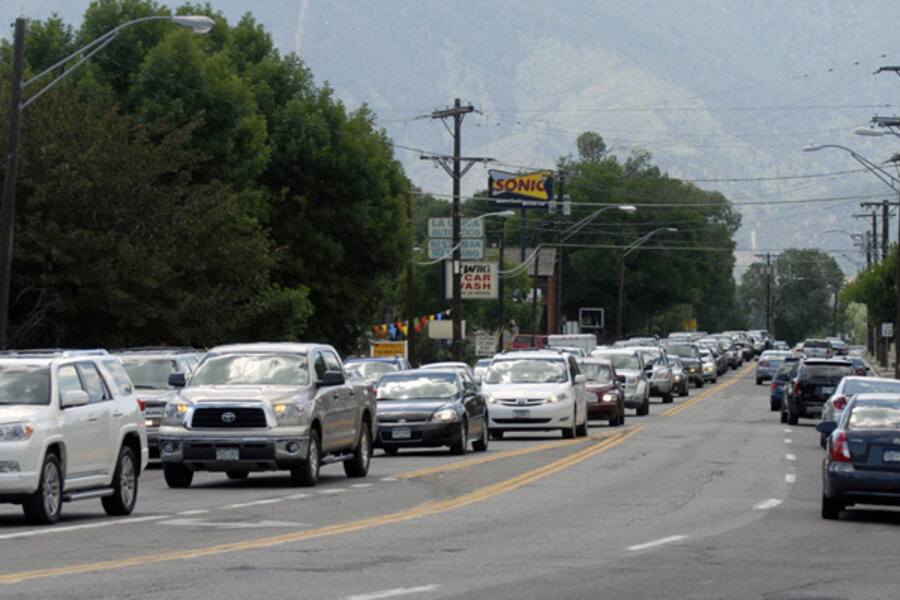Colorado wildfire out of control, residents evacuated
Loading...
| Colorado Springs, Colo.
A wildfire near Colorado Springs erupted and grew out of control to more than 3 square miles over the weekend, prompting the evacuation of a popular vacation town and the closure of nearby highways Sunday.
At least 11,000 residents of the town of Manitou Springs and nearby communities of Cascade, Chipita Park and Green Mountain Falls were ordered to leave Saturday or early Sunday. The resort communities include campgrounds, inns, rental cabins and other vacation properties that were emptied, though it wasn't immediately clear how many people those evacuations included.
The fire quickly grew to more than 2,000 acres amid tinder dry conditions, gusty winds and temperatures that reached into the 90s.
It also prompted evacuations for the west side of Colorado Springs and in the towns of Cascade and Ute Pass, but no structures have been destroyed and no buildings were under immediate threat.
The Garden of the Gods park, which has dramatic red rock formations, was also closed. Officials also closed traffic into Manitou Springs, a vacation town at the base of Pikes Peak, and shut down the Pikes Peak Highway, which goes to the top of the mountain.
Manitou Springs fire department's chaplain and public information officer, the Rev. David Hunting, said the orders were precautions because "fires can change their behavior dramatically" in such weather conditions.
In some neighborhoods, police cruisers rolled down streets, issuing the order to leave through a loudspeaker.
"Colorado Springs Police Department," an officer said. "This is a mandatory evacuation notice. Evacuate now."
Hundreds of other residents were under voluntary evacuation orders and were packing up, the Colorado Springs Gazette reported Saturday.
About 350 firefighters were dispatched to the blaze, with more in the way, said Rob Deyerberg of the Fairmount Fire Protection District. But the fire remained zero percent contained as it burned through the night.
Pikes Peak, which stands more than 14,100 feet high and is the most popular mountain in the country for climbers, was completely covered by grayish smoke by Sunday morning.
Crews were expected to contend with similarly hot and gusty weather on Sunday. The National Weather Service said temperatures were forecast to be close to 100 degrees throughout much of the state.
Colorado and other parts of the Southwest have become a tinderbox for wildfires as the region faces extremely dry or prolonged drought conditions. At least seven were burning across the state, where officials have been challenged by one of the most severe fire seasons in recent memory.
The weather also helped fuel another blaze that sparked Saturday and destroyed 21 structures near the mountain community of Estes Park. Investigators were determining whether it started in a cabin or as a wildfire before moving toward the homes, according to the Denver Post.
"Even though we lost 21 (structures), which is a huge tragedy, we saved many homes because of firefighters' efforts," Estes Park Fire Chief Scott Dorman told evacuees.
A separate fire continued burning near Fort Collins, scorching more than 118 square miles and destroying at least 191 homes. That blaze has become the largest and most expensive in Colorado history.
Elsewhere in the West, firefighters made progress against wildfires in Utah, New Mexico and California.





